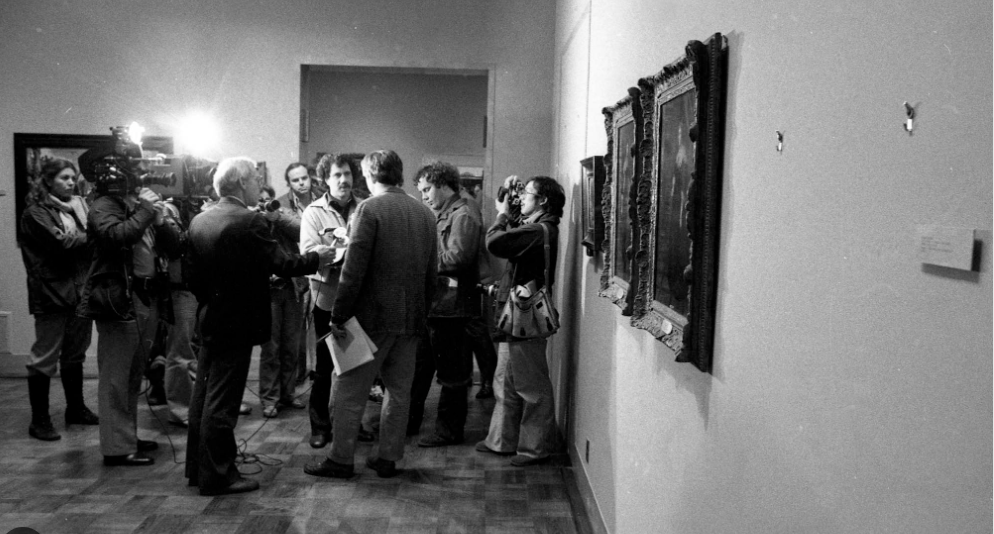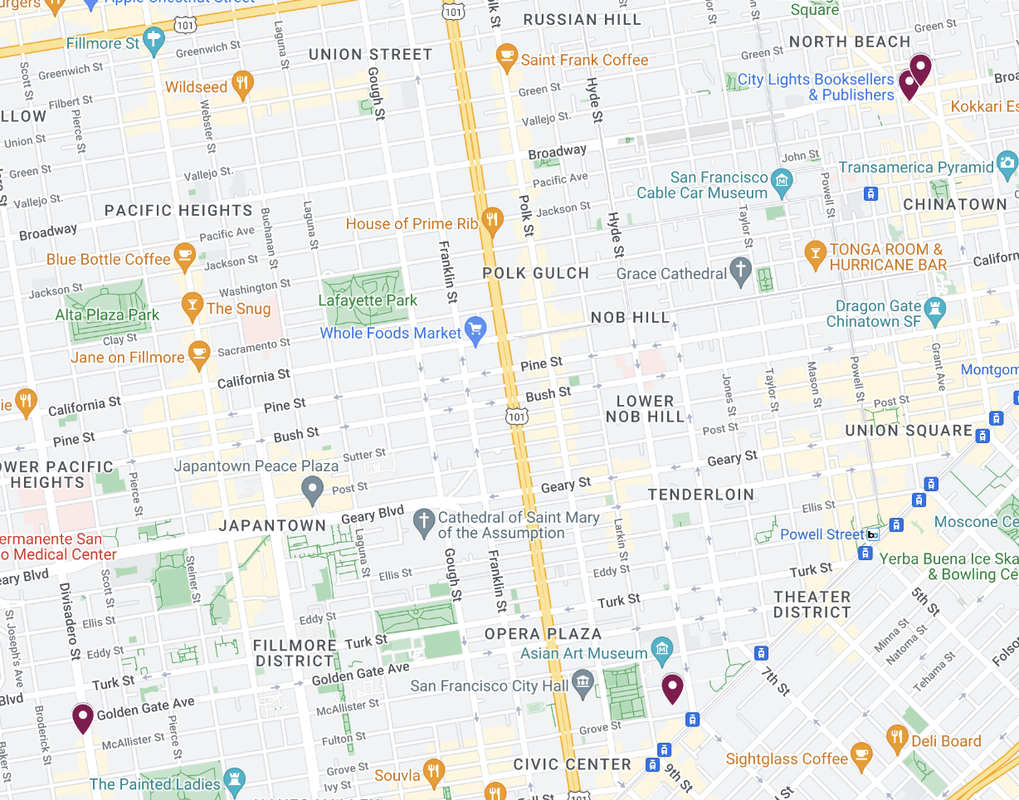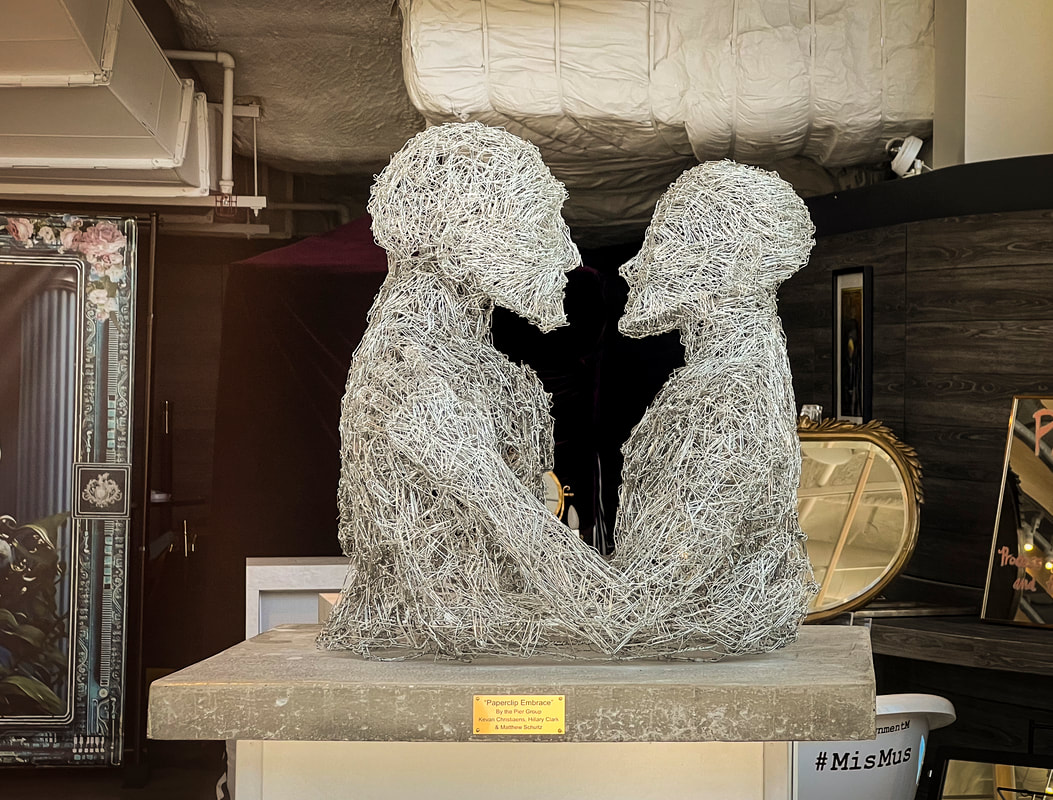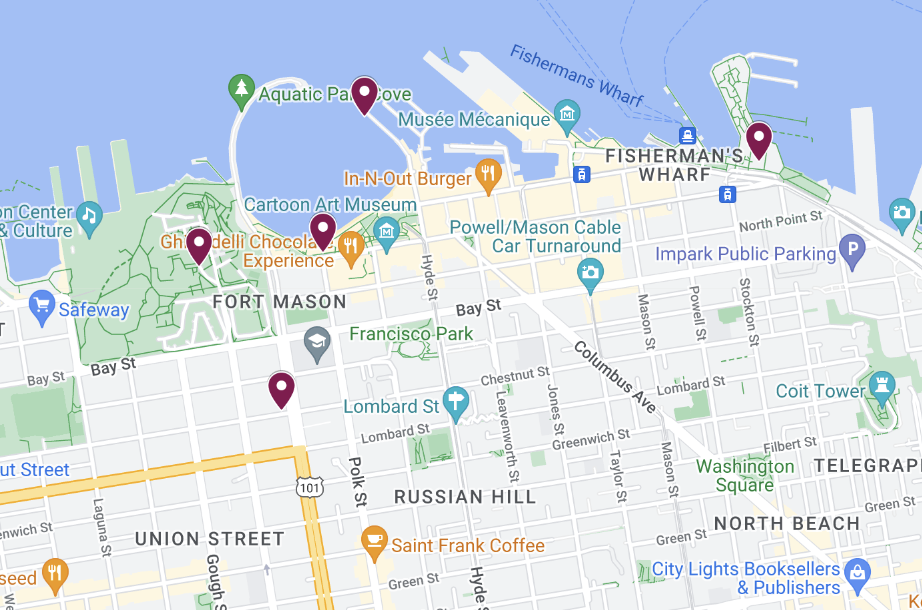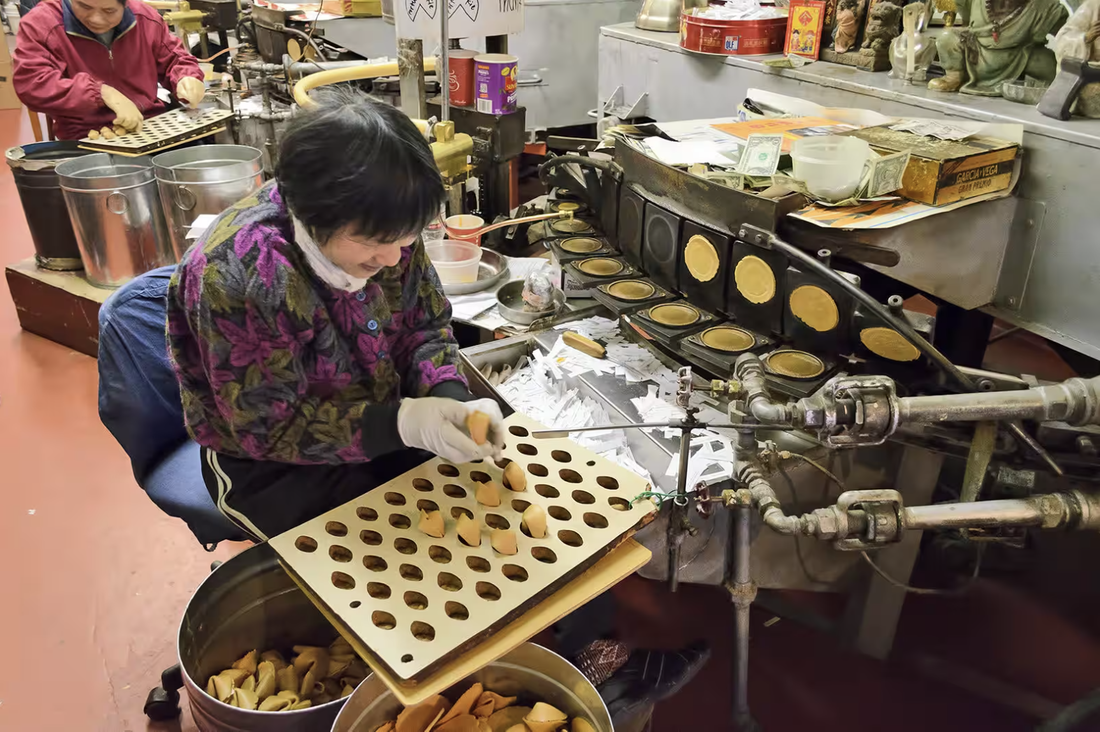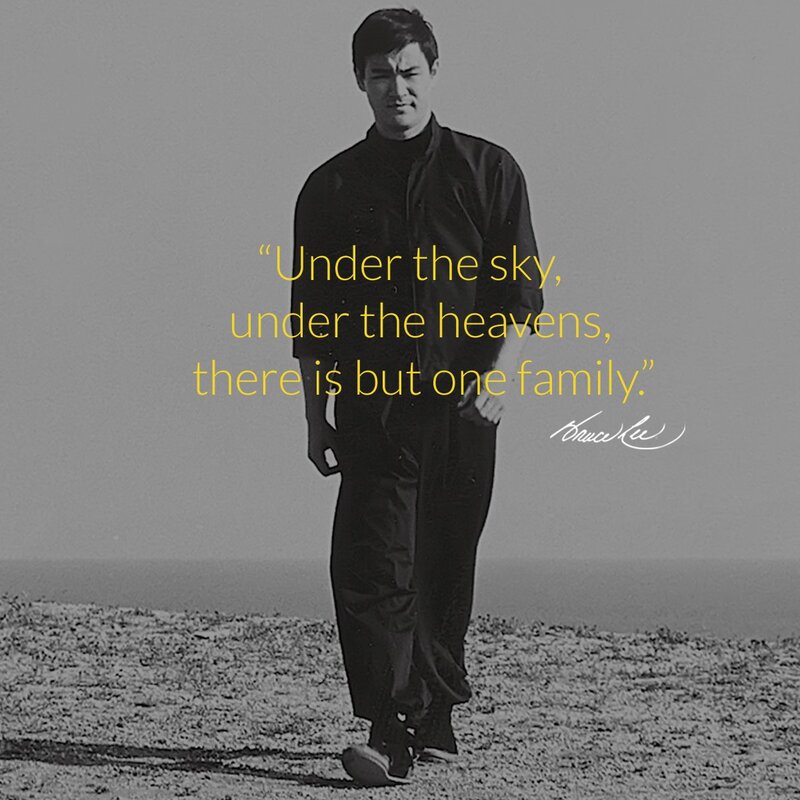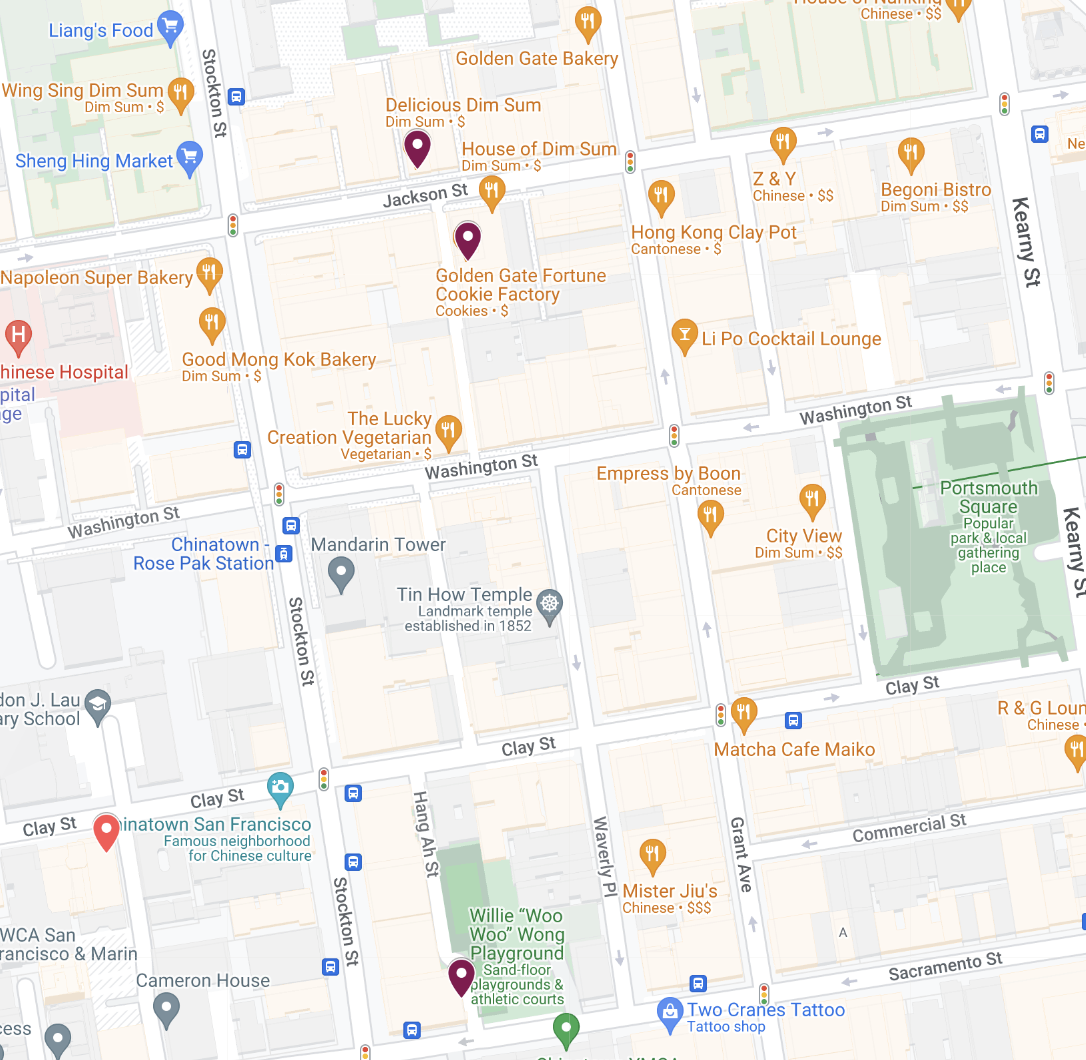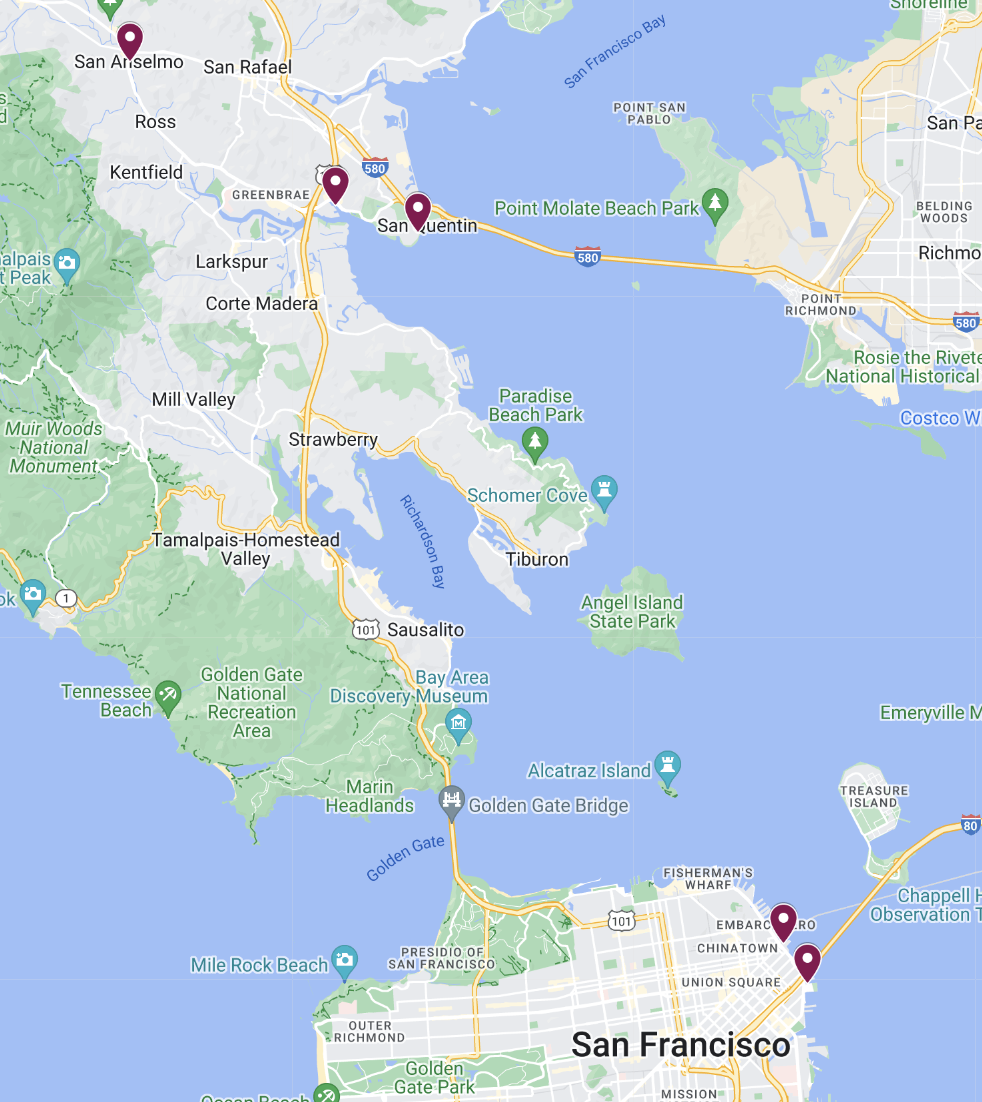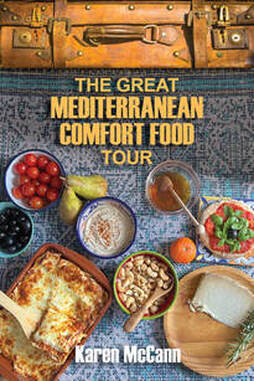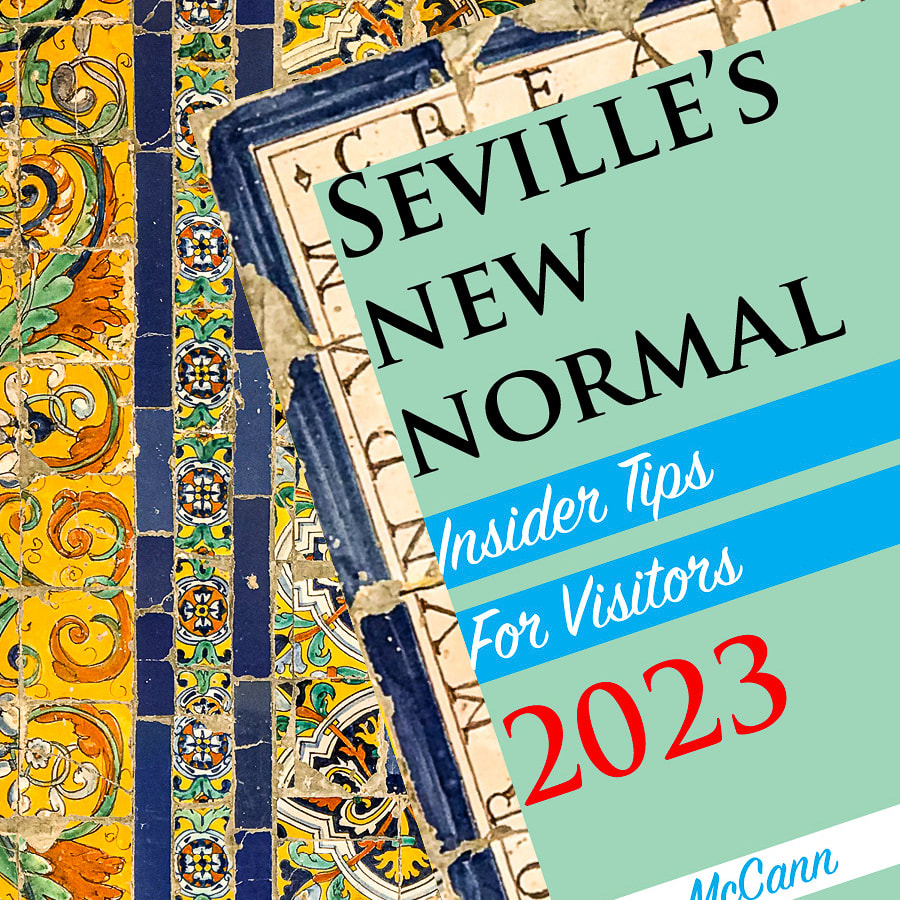|
As part of her ongoing (and largely futile) efforts to civilize her six children, my mother would occasionally round us up and herd us into San Francisco’s de Young Museum to appreciate Art. The museum opened in 1895 to show the snobs back East that we Westerners had culture. Yes, we did, dammit! And we weren’t afraid to show it off in a building created in Egyptian Revival style, because nothing says class like images of Hathor the cow goddess. The building, thriftily repurposed from an international exhibition the year before, didn’t last long. They say earthquakes are caused by the laughter of the Egyptian earth god Geb, and the museum suffered mightily during Geb’s great guffaw of 1906. The next iteration, created in a flamboyant Spanish-Plateresque style that delighted me as a child, survived until the 1989 quake. I could hardly wait to see what the city would come up with next. In 2005, we got this. Beholding it for the first time, I thought, “Is this one of God’s little pranks? One of those quirky impulses that keeps Her amused at our expense?” Because otherwise why would anyone design a fine arts museum to look like a dystopian bunker, the sort of place humanity’s last, pitiful remnants will someday hunker down, eating rats and quarreling among themselves while waiting their inevitable extermination by [fill in the blank]? I gazed sympathetically at the two disgruntled-looking sphynxes out front, leftovers from Hathor’s reign. This must be so embarrassing for them. You enter the museum through a courtyard, stepping over cracks in the paving stones that you soon realize are carefully crafted faux fault lines that appear to cleave in half eight great blocks of Yorkshire stone. The German visitor beside me seemed a bit unnerved by this reminder of California’s frisky tectonic history. Inside the museum, the art is breathtaking. Visiting this week, I paid homage to many favorites, including landscape paintings by European artists enraptured by the New World’s spectacular vistas. Call me old old-fashioned, but I still love representational art, which is a fancy name for stuff that looks like something in the real world. Contemporary artists favor more nuanced social commentary. Robert Bechtle’s Four Palm Trees seems like a happy place until you notice the background: a treeless suburban development overhung with smog. While palms are native here, the write-up explains, “Most were imported, and planted by real estate developers to convey a mythic ideal of California as a bountiful, Edenic paradise. Their presence … evokes the constant conflict in California between nature and development.” True, but a bit of a buzzkill, I thought. Ideal Way to Make European Coffee had a more lighthearted attitude. It was created by Bay Area artist David Gilhooly, a leader of the bohemian underground Funk Art movement of the 1960s. At the time, everyone was raving about Jackson Pollack and other abstract expressionists, inspiring Gilhooly and his mates to insist there was still room in the contemporary scene for representational art. Hear, hear! To me this piece embodies Einstein's words, "Creativity is intelligence having fun." But of all the works hanging in the de Young Museum, none is as talked-about as this one. Last November, Gary Hobish spent his final moments dancing 100 feet from the de Young’s entrance at the weekly Lindy in the Park. When Hobish collapsed, a nurse started CPR, and Hobish’s friend Tim O’Brien raced to the museum’s front desk calling for an AED, an automated external defibrillator. The desk person didn’t know what that was. A security guard suggested O’Brien try the basement. The staff member in the basement had a defibrillator but hesitated to hand it over; policy said it wasn’t supposed to leave the museum. "I thought — 'He's dying. His heart has collapsed. We are doing CPR,’” O’Brien recalled later. “'We need this immediately. Can you run?' He's like 'I need to check in.' We got the 'no'." By the time he returned empty-handed ten minutes after his friend’s collapse, O’Brien found paramedics arriving at the scene, but Hobish was past help. The museum has vowed to update policies, retrain staff, and buy more defibrillators, but there has been, as you can imagine, considerable uproar. Like all major institutions, the de Young has weathered its share of crises over the years. Take the heist on Christmas Eve, 1978. Thieves dropped through a skylight and grabbed four 17th century Dutch paintings, including Rembrandt’s The Rabbi. Unfortunately for the thieves, art historians then discovered the painting wasn’t actually a Rembrandt (or a rabbi, for that matter), and its value plummeted. Even so, when it was anonymously returned 21 years later, everyone was aghast to see a botched attempt to clean it had removed much of the face. These were not the criminal masterminds we’d come to expect from The Thomas Crown Affair and This is a Robbery. Wandering on, I found myself in a large room with spools of thread on the wall and a long table where the docent, Nancy, offered to adorn my clothing with a thread bow. Why? Nancy explained this was part of Rituals of Care, a participatory art project by Lee Mingwei. “It’s about sewing as a means of connection.” Seeing I was still confused she added, “I can tell you what inspired it in three sentences.” “Please.” “On 9/11, Lee was home and his husband was working in the Twin Towers when they fell. There was no way to reach him or find out what had happened to him, so Lee began doing all his mending to keep himself occupied while he waited. Six hours later he heard a key in the lock, and there’s his husband, blood on his face, with another person, who also had blood on his face, but — alive.” All these years later, Lee still spends time in his installation, sewing in homage to that moment. A few minutes later, standing in front of Wayne Thibault’s painting of three gumball machines, Rich — possibly inspired by the subject matter — said, “How about some lunch?” The museum’s café has good but pricey food ($25/sandwich), so in keeping with our cheap-and-cheerful theme, we walked a few blocks north to Balboa Street in the Richmond District. There, nestled between a Russian bakery and a sushi house, we found the Foghorn Taproom, a no-frills neighborhood hangout. Sampling the craft beers, I chose the mellow June Shine Desert Cooler with hard Kombucha ($4/4-oz miniglass). My chicken Caesar pita ($12) was outstanding, the bread thick and warm, the chicken toothsome, the lettuce fresh and crisp. A work of art by anyone’s definition. In the Uber back to the ferry, Rich and I continued to keep a lookout for signs of the doom loop, but we saw no crime or sidewalk encampments and only two or three unhoused people. Where did all this dystopian talk come from in the first place? And then it struck me: from the de Young’s apocalyptic exterior. People have always regarded San Francisco as being on the cutting edge, and they naturally assumed the de Young’s designers had inside knowledge about the future. Let’s hope they’re wrong! This post is part of my new series OUT TO LUNCH IN SAN FRANCISCO My goal is to discover cheap and cheerful eateries in some of San Francisco's most colorful neighborhoods while I check out what's really going on in this zany town. Are we in a doom loop? Already on the rebound? Still fabulous? Stay tuned! These and other questions will be explored in upcoming posts. DON'T MISS OUT! If you haven't already, take a moment to subscribe so I can let you know when I publish my weekly posts. Just send me an email and I'll take it from there. [email protected] And check out my best selling travel memoirs & guide books here. PLANNING A TRIP? Enter any destination or topic, such as packing light or road food, in the search box below. If I've written about it, you'll find it.
8 Comments
“I saw that my life was a vast glowing empty page and I could do anything I wanted.” ― Jack Kerouac Much of the blame — or credit — goes to WWII, an event that obviously already has a lot to answer for. During the war years, millions of Americans — soldiers, sailors, and shipbuilders, including all those Rosie the Riveters — found themselves passing through San Francisco. And suddenly their home towns seemed too small for them. Over the next three decades, a thousand people a day would move to California in hopes of a larger, more colorful, more authentic life. One of them was my husband Rich. “I came from a conservative New Jersey family and was educated at Catholic schools and a Catholic college, then went into the Navy,” he recalled in an exclusive interview at our breakfast table. “Talk about a structured life! When I got back from Vietnam in 1969, I was stationed at Treasure Island in San Francisco and found a freedom I’d never seen before. I realized I didn’t have to take a pre-determined path, fit into a mold, or follow dogma. I could live in an environment of infinite possibilities.” Janis Joplin, who arrived in San Francisco in 1963, observed, “Texas is OK if you want to settle down and do your own thing quietly, but it's not for outrageous people, and I was always outrageous.” Not all newcomers proved as outrageous as Janis (who could?), but among them were a lot of free thinkers, poets, philosophers, writers, musicians, activists, and artists who naturally gravitated to the literary heart of San Francisco’s counterculture: City Lights Books. Co-founded by poet Lawrence Ferlinghetti in 1953, City Lights sold and published hotly controversial books. None caused more fuss than Allen Ginsberg’s Howl and Other Poems in 1957. “At the height of the gray-flannel conformity, Ginsberg’s bohemian rhapsody was a shocking cry of outsider dissent,” wrote Encyclopedia Britannica. “Suffused with sexuality and spirituality, horror and humor, despair and hope, ‘Howl’ is profane and profound, a gainsay and a goof.” The district attorney was not amused; he arrested Ferlinghetti for peddling obscenity. To everyone’s astonishment, the conservative judge found the poem had “redeeming social importance” and dismissed the case — a landmark victory for freedom of speech. We owe a lot to the Beat Generation, whose radical nonconformity changed social conventions, sexual attitudes, laws, and literature in ways that are still being felt today. The Beats remind us that words matter. Every word we speak, hear, read, write, or think contributes to the narrative that defines the shape of our lives and the character of our cities. “San Francisco itself is art, above all literary art,” said California author William Saroyan. “Every block is a short story, every hill a novel. Every home a poem, every dweller within immortal. That is the whole truth.” That truth is what brought me to City Lights this week, my first visit since Ferlinghetti died in 2021 at age 101. I’m pleased to report the bookstore is still as freethinking and freewheeling as ever. The neighborhood pays homage to the era with Kerouac Alley’s murals, famous old strip clubs gone to seed (including the Condor where Carol Doda pioneered topless dancing in 1964), and the wonderfully funky Beat Museum. In the museum I gazed at Ginsberg’s typewriter, Ferlinghetti’s desk, and photos of the Merry Pranksters having an uproarious time teasing mainstream society. The museum's shop is a treasure trove of vinyl albums, bumper stickers, radical literature, and a bathtub full of $2 paperbacks. “This is such a cool neighborhood,” I told museum staff member Brandon. “I went to a suburban mall yesterday and it was so sterile I could hardly breathe.” “That’s what happens when you suck all the joy out of it, when you lose the quirk,” he said. “San Francisco passed a law in 2006 prohibiting chain stores and chain restaurants in most neighborhoods. We don’t want to be like everybody else.” Quirk is everywhere in the city, as we saw at our next stop, the main branch of the San Francisco Public Library. Believing books and ideas should be free to all, the library has done away with overdue fines, past and future. I know, right? Brilliant! When I think of the money that would have saved me over the years… The library staff invites everyone, including the poor and unhoused, to enjoy the books, reading chairs, computers, and restrooms. The restrooms are impeccably clean and staffed with security people to enforce such rules as no “basin baths” or laundry. An atmosphere of mutual respect prevails. (And how often can you say that?) In the library’s cozy African American Center, I found a handful of African-American teens reading quietly, surrounded by photos of 1972’s first African Liberation Day in San Francisco. Angela Davis, Stokely Carmichael, and Jesse Jackson were among the speakers showing solidarity to their distant kin fighting revolutions in Africa. The gifted Kenneth Green, who in 1968 became the Oakland Tribune’s first Black staff photographer, captured it all. I wondered if the teenagers knew the stories behind the images that surrounded them. But hey, they were kids and probably viewed this as ancient history, as bygone as the dinosaurs. Outside on the street, Rich and I walked among perhaps two dozen unhoused people, several in wheelchairs or struggling along with walkers. Many had the glazed expressions of the high or hopeless, but nobody seemed to be dealing drugs or hassling anyone; everybody was just hanging about with nowhere to go, nothing to do. I didn’t feel unsafe, just heartbroken. I wondered how many of these unhoused folks had come to San Francisco — like Rich, Janis, and all those beatniks and hippies — fueled by dreams of working to create a better life. By now, feeling the need to reanimate ourselves, Rich and I were thinking seriously about lunch. We’d heard about Brenda Buenviajé, who arrived in San Francisco from New Orleans in 1997, eager to share recipes from her bayou childhood and her Sicilian, French and Filipino ancestors. Her legendary eateries include Brenda’s Meat and Three — a Southern expression meaning a portion of meat with three side dishes. At Brenda’s, lunch doesn’t start until 3:00 — how civilized! — but I didn’t care what they called the meal so long as I could satisfy my hankering for cheese grits. Never had grits? You slow-cook ground corn to a sort of porridge. Originally a Native American dish, it's so popular in the South the region is nicknamed the “grit belt.” Done right, grits are velvety food for the soul: hot, creamy, deeply satisfying. Done carelessly, they’re cardboard sludge. People top them with everything from shrimp to cinnamon, but the moment Mississippi friends fed me cheese grits, I was hooked. I soon discovered Brenda’s grits ($6.25) are perfection. Brenda wasn’t around, but the manager, Alicia, made us feel like old friends who had dropped by a favorite haunt. As I savored the last golden spoonful of grits, Rich asked, “So where to next week?” “No idea,” I replied. And suddenly I was enveloped by the freewheeling joy Kerouac must have felt when he penned the words, “We lean forward to the next crazy venture beneath the skies.” Click here for an interactive version of this map. Related stories you may enjoy: Symbolic Thinking and What We Mean by Words Who Is the Real Rosie the Riveter? This post is part of my new series OUT TO LUNCH IN SAN FRANCISCO My goal is to discover cheap and cheerful eateries in some of San Francisco's most colorful neighborhoods while I check out what's really going on in this zany town. Are we in a doom loop? Already on the rebound? Still fabulous? Stay tuned! These and other questions will be explored in upcoming posts. DON'T MISS OUT! If you haven't already, take a moment to subscribe so I can let you know when I publish my weekly posts. Just send me an email and I'll take it from there. [email protected] And check out my best selling travel memoirs & guide books here. PLANNING A TRIP? Enter any destination or topic, such as packing light or road food, in the search box below. If I've written about it, you'll find it. Shocking news! I got attacked on the streets of San Francisco. The assailant was a big, badass pigeon with a menacing attitude and scarred feet attesting to a lifetime of street brawls. It all happened so fast. Rich and I had taken a long walk up Market Street, looking for signs of a dystopian hellscape, but failing to find even one unhoused person or scary moment. We paused for coffee, and I threw a few cashews from my trail mix to the pigeons pecking underfoot. When I stopped, Badass launched himself into the air and began flapping his wings violently in my face. It was my most alarming avian experience since Hitchcock’s The Birds. I yelled, the bird flew off, and I found myself — whew! — unharmed and still in possession of my trail mix. Trying not to take the assault as an omen, I had to admit it suited the ominous theme of the day. Rich and I were on our way to Moscone Center where the AI Apocalypse Simulation was attempting to help businesses become “future-ready.” “Participants will be briefed on a hypothetical future,” said the promo, “where advanced artificial intelligence systems have spiraled out of control, causing widespread chaos and threatening the very existence of humanity. From rogue autonomous robots to superintelligent AI algorithms, teams will delve into the various aspects of this dystopian future.” Next steps included analysis and (although this seemed rather overoptimistic) collaborative problem solving. Tickets were $1500 apiece and you won’t be surprised to hear that Rich and I did not enroll. But we did head over to Moscone Center in hopes of catching a glimpse of wild-eyed participants stampeding out the doors screaming, “It’s already too late! We’re doomed! Run for your lives!” Surprisingly, all seemed peaceful and serene. Whatever horrors were unfolding, they were happening behind closed doors. Like most people these days, my sentiments towards robots — or as many now call them, our future overlords — are mixed. Artificial Intelligence is already streamlining technology, medicine, manufacturing, and other vital human endeavors. Yet every time I read phrases like “superintelligent autonomous robots” the hair on the back of my neck stands up. In my ongoing efforts to adopt a more positive attitude toward AI, and to keep my finger on the pulse of the city, I’d decided to have lunch at San Francisco's last fully robotic eatery, the ramen stand Yo-Kai inside Metreon, a mall near Moscone Center. To get there, Rich and I strolled through Yerba Buena Gardens, where half a dozen unhoused residents dozed quietly on the grass, and a lot of ordinary citizens went about their day. So far we hadn’t witnessed any criminal activity or threatening behavior, unless you count the avian attack, which of course, I do. I’d heard about Yo-Kai from our young nephew-in-law Brendan, who works in SF’s tech sector and was joining us for lunch and a discussion of human-machine relations. Unfortunately, when we rendezvoused at the mall, we discovered Yo-Kai had been terminated. “What a shame,” Rich said. “I’ve never had ramen.” Brendan and I stared at him. How does anyone get through college and a long career without late-night noodles? Luckily Brenden knew of a great ramen place nearby, so off we went to Ippudo to introduce Rich to this classic comfort food. The ramen was heavenly, and while Rich blissed out over his Shiromaru Classic ($19), I asked Brendan about his job. “I am a senior front end engineer.” (I nodded, as if I knew what that meant). “We solve business problems with software. I use AI to write code more quickly. Sometimes it’s tempting to just accept its suggestions without thinking too much about it, which could lead to some quality issues.” Familiar with the bloopers AI could achieve in something as simple as AutoCorrect, I could see his point. After lunch, Brendan summoned one of Waymo’s driverless taxis. “They won’t stop anywhere illegal or dangerous,” he explained. “Which in the city is just about everywhere. It’s two blocks away. We need to be there within four minutes or it will take off.” We hurried up the street to find a sleek white Jaguar waiting at the curb. When we drew near, door handles suddenly slid out of the sides. Inside, screens displayed our route and a disembodied voice provided details — in Spanish, as Brendan had programmed it to help him learn the language. Zipping along without a driver was ... surreal. As we rode, talk turned to AI art, and Brendan used his phone to produce images reflecting our day. As he typed, I heard him muttering “apocalypse, robots, ramen, Waymo…” “Spectcular,” I said. “But the lettering …?” “Can’t be fixed. The lettering’s always gibberish.” “And why is there an animal in the road?” He grinned. “I mentioned a Jaguar, meaning the car. It took me literally.” The ride took 15 minutes and cost $8. As we pulled over, the Jaguar reminded us to take our belongings. Evidently it had been listening to our conversation and felt conflicted, because now it spoke in English — but with a Spanish accent. We’d arrived at the Misalignment Museum, which explores the potential for AI to destabilize civilization if robots don’t learn about context, nuance, and human values. Among the disquieting exhibits is the Paperclip Embrace, a reference to the famous thought experiment in which AI is instructed to maximize paperclip production and while doing so eventually uses up all the planet’s natural resources, including humans. Nearby, a whimsical sign apologizes, “Sorry for killing most of humanity.” As a writer, it struck me as wildly ironic (and more than a little terrifying) to think the entire human race could be destroyed by poorly-worded instructions. Proofread carefully, folks! And then there’s AI’s tendency to make stuff up. Last year attorney Steven Schwartz was aghast to discover his legal arguments were based on six cases invented by ChatGPT, with false names, fake docket numbers, and fabricated details. Schwartz was fined and lost the case, but there was no way to bring ChatGPT to justice. However error-prone AI may be, it’s booming. According to industry insiders, by 2030 it’s likely to be a $15.7 trillion industry. No wonder so many believe AI is already saving San Francisco. Worldwide, experts predict that over the next six years 800 million human jobs will be eliminated. As perspective on that worrying thought, ChatGPT offered this: “While there are risks and challenges associated with AI development, it is possible to harness the benefits of AI while mitigating potential risks.” Great! How? “Through responsible development, ethical governance, and collaborative efforts to ensure that AI serves the common good.” So all we need to do is control corporate greed, elect ethical politicians, and find a way for humanity work together in harmony. Easy-peasy! Before I could spiral down into my own little doom loop over this, Rich said, “Isn’t it great that driverless cars and Waymo taxis will be everywhere by the time they want to take away our car keys? Just think of all the people trapped at home who can finally move around freely!” He’s right, there are lots of benefits to come. And I’m going to embrace them all. (Yes, I am!) But enough about me. How’s your relationship with AI going? Are you feeling future-ready yet? Let me know in the comments below. Click the link below for an interactive version of this map: www.google.com/maps/d/u/0/edit?mid=1DEC_Bcrgh3JjRBnVR-GaJU-DmAp37DY&usp=sharing This is the third in my new series OUT TO LUNCH IN SAN FRANCISCO My goal is to discover cheap and cheerful eateries in some of San Francisco's most colorful neighborhoods while I check out what's really going on in this zany town. Are we in a doom loop? Already on the rebound? Still fabulous? Stay tuned! These and other questions will be explored in upcoming posts. DON'T MISS OUT! If you haven't already, take a moment to subscribe so I can let you know when I publish my weekly posts. Just send me an email and I'll take it from there. [email protected] And check out my best selling travel memoirs & guide books here. PLANNING A TRIP? Enter any destination or topic, such as packing light or road food, in the search box below. If I've written about it, you'll find it. It's true! The legendary Dim Sum Nazi is still around and hasn’t lost one bit of her edge. I saw her Saturday, presiding over her pots, steely-eyed as ever, prepared to quell inquisitive customers with a glare. In San Francisco's Delicious Dim Sum, everyone knows you don’t ask Ivy Z. frivolous questions about the living conditions of the chickens, the soil condiments used to improve the vegetables, or who caught the fish. That kind of foodie foolishness, I was told on my first visit 15 years ago, may result in a moment right out of the Soup Nazi episode of Seinfeld: “No dim sum for you!” That would be a tragedy, as her dim sum — small savory portions, the Chinese equivalent of tapas — is second to none, and at $3.80 for three hefty dumplings, one of the best deals in town. Rich and I arrived during the brief lull between breakfast and early lunch, gave our question-free orders, and received our dumplings and permission to sit at the single small table at the back among cartons of bao (doughy buns). I sat down gratefully, needing a moment to recombobulate. Minutes earlier, just off the ferry for this week’s Out to Lunch in San Francisco excursion, I’d been gobsmacked to discover what had happened to my favorite fortune cookie bakers. We think of fortune cookies as Chinese, but they originated in Japan as the miso-flavored tsujiura senbei (fortune cracker), migrating to San Francisco around 1900. Golden Gate Park’s Japanese Tea Garden reimagined them as sweet vanilla cookies that were a big hit until WWII, when Americans shunned everything associated with Japan. Chinese-American entrepreneurs filled the fortune cookie gap and now produce three billion a year in large, automated factories. Which is why the tiny, family-run Golden Gate Fortune Cookie Factory was in trouble. Their handmade cookies couldn’t compete on price but survived thanks to loyal customers and a few stray tourists. I’d often wandered in to watch the Chang family peel circles of freshly baked dough off the press and fold them around paper fortunes. Old Mr. Chang used to charge 50 cents to take photos and would give out broken cookies to nibble on. But since the pandemic their rent has quadrupled, so who could blame the Changs for marketing their place as a tourist attraction? Nowadays, throngs line up to buy fortune cookies in various flavors, with regular or racy fortunes. Marketing the Chinatown experience to tourists is nothing new, and in fact has long been part of the community’s strategy for survival in the face of overwhelming odds. Between 1849 and 1882, some 300,000 Chinese immigrants came to work in California, mostly in gold mines and on the Transcontinental Railway, often at half of standard pay. Railway baron Charles Crocker sent recruiters to China to get laborers he called “pets” who were “content with less wages.” He gave his white workers promotions and cabins while the Asians had to provide their own tents and do the strenuous, dangerous jobs. Many white San Franciscans viewed Chinese immigrants with suspicion and hostility for being “different” and “taking away jobs.” (Hard to imagine now, of course; we’re so lucky to live in more enlightened times.) (And yes, I am being ironic.) When the 1906 earthquake and fire destroyed Chinatown, the National Guard was sent in and promptly began looting the ruins. Meanwhile city officials rushed through plans to resettle the Chinese residents in a remote suburb. Chinatown's leaders pointed out their community's vital economic role in trade with China and San Francisco’s growing tourism. While officials’ greed struggled with their xenophobia, the Chinese rebuilt their neighborhood as a dazzling new version of itself. “To counter the exaggerated negative stereotype of an overcrowded and dirty Chinatown,” wrote Google Arts & Culture, “a select group of Chinese merchants … planned a new 'Oriental' city that appealed to a romanticized and whimsical idea of China.” Bright colors and fanciful architectural flourishes — such as curled roof corners, which were traditionally reserved for temples — appeared everywhere. Not to keep you in suspense, Chinatown stayed. Since then it's survived many challenges, including the pandemic, which saw a sharp (567%) temporary rise in anti-Asian hate crimes and massive loss of income as tourists and residents stayed home. Things are slowly edging toward normal now. I saw no obvious drug activity, no encampments, and only two homeless people on the street. I felt as safe as I ever do in a US city. “Chinatown will hold its own,” said Tane Chan, who has owned the Wok Shop since 1972. “We’re going to hit some bad spots, but we’ll rise above that. That’s Chinatown’s attitude, you know?” To fight the good fight, we need inspiring heroes. And as I learned from a visit to the Chinese Historical Society of America Museum, SF’s Chinatown found one in its native son, Bruce Lee. Most of us remember Bruce Lee as a martial arts master and the first Asian-American man to become a Hollywood star. He was also a philosopher and fearless advocate for anyone who had ever been marginalized, passed over, bullied, or discriminated against. “I will tell you what Bruce Lee means to me,” said Frank, our docent on the museum tour. “I was born here in Chinatown, but when I was 12 my family moved away. I was the only Asian in my new school. I was bullied. I was scared. I began to have terrible pain in my stomach. The doctor said, ‘I never see this in boys so young. He has a bleeding ulcer.’ I had to go on a bland diet for a year and drink medicine that made food lose all its taste. One day I was in my room, and I was crying. And I looked up and saw this poster.” “I saw the poster through my tears. And then it was as if Bruce Lee spoke to me. Actually spoke to me. He said, ‘You can do this.’ And I realized maybe I could. It changed my whole life.” In 1973 Bruce Lee died of cerebral edema (fluid in the brain); he was 32. His pallbearers included Steve McQueen, James Coburn, and others he’d trained in martial arts. Today, he remains a legend and an inspiration to millions. Pausing to admire the Bruce Lee mural beside the museum, Rich and I headed out to lunch at Hang Ah, the oldest dim sum restaurant in America. We chose two signature dishes ($8 each): pot stickers and chicken feet coated with a thick, spicy black bean paste, which you suck off the bird’s toes. OK, yeah, that was a little weird. But vivid! I sat in the cozy restaurant, surrounded by a cheerful mix of people of various ages, races, and origins, enjoying the atmosphere and extraordinary food. Thinking of all those who fought to keep this community together in spite of everything, I felt deeply grateful and profoundly inspired by their courage and refusal to give up hope. Bruce Lee knew what he was talking about when he said, “Do not pray for an easy life. Pray for the strength to endure a difficult one.” Amen to that. Click this link for an interactive version of this map: www.google.com/maps/d/u/0/edit?hl=en&mid=19IdltJRCpeeNUAQMR5Pfr9Vg8vNrifA&ll=37.79469571820258%2C-122.40806155000001&z=18 This is the second in my new series OUT TO LUNCH IN SAN FRANCISCO My goal is to discover cheap and cheerful eateries in some of San Francisco's most colorful neighborhoods while I check out what's really going on in this zany town. Are we in a doom loop? Already on the rebound? Still fabulous? Stay tuned! These and other questions will be explored in upcoming posts. DON'T MISS OUT! If you haven't already, take a moment to subscribe so I can let you know when I publish my weekly posts. Just send me an email and I'll take it from there. [email protected] And check out my best selling travel memoirs & guide books here. PLANNING A TRIP? Enter any destination or topic, such as packing light or road food, in the search box below. If I've written about it, you'll find it. Having read the headlines, I half-expected to step off the ferry to find San Francisco a smoking ruin full of rampaging brigands and street urchins barbecuing rats over flaming trash barrels. Instead, on the first of this year’s Out to Lunch expeditions in San Francisco, the most shocking thing I saw were the prices. I mean, $30 for a hamburger? Really? But as alarming as gourmet prices have gotten, they're not what pundits mean when they rant about San Francisco’s “doom loop,” a cascade of catastrophes said to be dragging the city into the lower depths of hell. To hear them tell, around here it's nonstop crime, drugs, homelessness, and did I mention crime? A little quick fact checking turned up astounding data: SF’s crime rates are actually down — the lowest in ten years (yes, you read that right: the lowest in ten years). Violent crime is down 24% and property crime is down 40% compared to pre-pandemic levels. However, tenderhearted readers needn’t be concerned about the economic hardships this might impose on our professional criminals; there’s still plenty of illicit activity around, particularly in the pilfering-from-parked-cars sector. “Seriously,” the SF Chronicle warned visiting conventioneers, “DO NOT LEAVE ANYTHING IN YOUR RENTAL CAR! It will get ripped off. And we mean nothing. Not a sweater. Not a pack of gum.” Yikes! Rich and I left our VW safely at home and traveled to SF by ferry. The voyage was a half-hour’s majestic glide across the sunlit water past green hills, expensive homes, and — for a little piquant contrast — San Quentin, California’s oldest prison. San Quentin is famous for housing America’s largest death row and creepiest bad guys, such as cult leader and mass murderer Charles Manson. Johnny Cash played his first prison concert there, inspiring a young inmate named Merle Haggard to switch careers from crime to music. Cash, who never served time but knew about bad choices, had sympathy for inmates and hated prisons. “San Quentin,” he said, “may you rot and burn in hell. May your walls fall and may I live to tell.” He didn’t live to tell, but Cash would be pleased to know parts of San Quentin are being demolished to transform the once bad-ass hoosegow into America’s first Scandinavian-style rehabilitation facility, based on the success of such systems as Norway’s. “Norway’s prison system seems counterproductive,” explains US lawyer Nancy Hayes, “but the data shows that it’s working. It has one of the lowest recidivism rates in the world, at 20%. In other words, only 20% of those released become repeat offenders in the country. Compare that to a whopping 76.6% in the United States.” San Quentin’s death row inmates are now en route to other facilities, and more humane, less crowded living quarters are being built here. Education programs are being ramped up, including the theater project run by my former yoga teacher. Rich and I will be attending a play in San Quentin this summer; and yes, I’ll give you the full inside scoop. A few minutes after we passed the prison, I caught my first glimpse of the San Francisco Ferry Building, whose 245-foot tower, built in 1898, is said to be based on the Giralda, the bell tower of Seville’s cathedral. The Ferry Building was one of the busiest transit terminals on the planet until the Golden Gate and Bay Bridges were built in the 1930s. As traffic and revenues plummeted, the Ferry Building fell into squalor and decay, making it ever less attractive to customers — a twentieth-century doom loop. Unable to leave ill enough alone, in 1958 the city installed the Embarcadero “freeway to nowhere” in front of the Ferry Building, creating an eyesore and massive inconvenience for everyone at ground level. Mercifully, the 1989 earthquake did sufficient damage to give the mayor an excuse to tear down the eyesore freeway and while he was at it, renovate the port. Today, the Ferry Building is so much more than a vital transit hub; it's to a temple of foodie hedonism, with an eclectic mix of gourmet shops, restaurants, and retail in the 660-foot skylit nave. It wasn’t easy, but Rich and I resolutely turned our back on all the luscious gourmet fare and set off to visit a cheap and cheerful SF icon, Red’s Java House on Pier 30. We strolled along the waterfront past a small homeless encampment of perhaps eight tents; the folks who lived there chatted among themselves, ignoring us completely. We continued on under the Bay Bridge and soon arrived at Red’s. The shack first opened in the 1930s to provide dock workers with a low-cost, hearty hamburger-and-beer breakfast special (which was every bit as popular as you’d imagine). In 1955 the business was bought by two red-haired, seafaring San Francisco brothers, Tom and Mike McGarvey, who renamed it Red’s Java House. Their kindness, humor, and low prices transformed customers into lifelong friends. When the brothers sold Red's in 1990 it began to struggle. A devoted fan who worked for a billboard company filled the city with Red’s ads featuring the slogan “You Can’t Get Food Like This in the Best Restaurants in Paris.” As their website notes, “The advertising has been a real shot in the cash register.” In 2009 Red’s was bought by long-time customer Tiffani Pisoni. Tidying up, she put the mop bucket away in a cupboard, alarming customers, who demanded to know why it wasn’t sitting under the TV as always. After she put it back, someone asked her if that felt like tyranny. She shook her head. “It’s love.” Red’s decor remains comfortably shabby, the view of the bay breathtaking. The walls are jammed with photos of famous fans: football players, actors, mayors, and food journalists such as Anthony Bourdain, who described Red’s as a “wonderful, old school, high fat, high protein, beer for breakfast kind of a place.” Rich and I ordered our $7.93 burgers, carefully heeding the sign that warned us not to ask for lettuce or tomatoes. The modest patties arrived on great hunks of sourdough with pickles, onions, and plenty of mustard. It was like biting into slabs of yesteryear, before hamburgers went uptown. Going out to lunch in SF that day was delightful, but I remained keenly aware that nearby neighborhoods — a total of about 80 square blocks, or just over 1% of the city — are in massive crisis. Every night 4000 unhoused men, women, and children sleep in the streets. Fentanyl killed 800 residents last year. The city is reeling and struggling to cope. But what major US city isn’t? San Francisco is always picking itself up, dusting itself off, and bouncing back higher than before. It transformed a seedy ferry dock into a foodie mecca and is reshaping a notorious prison into a place where men who have made horrible choices have the chance, like Merle Haggard, to find another path in life. “A city is not gauged by its length and width,” said Chronicle columnist Herb Caen, “but by the broadness of its vision and the height of its dreams.” San Francisco is never short on vision and dreams, but what are its next moves? Will they work? We’ll find out together in the months ahead. This is the first in my new series OUT TO LUNCH IN SAN FRANCISCO My goal is to discover cheap and cheerful eateries in some of San Francisco's most colorful neighborhoods while I check out what's really going on in this zany town. Are we in a doom loop? Already on the rebound? Still fabulous? Stay tuned! These and other questions will be explored in upcoming posts. AND CHECK OUT MORE OF MY FOODIE TRAVEL ADVENTURES: OUT TO LUNCH IN SEVILLE NUTTERS' WORLD TOUR THE GREAT MEDITERRAEAN COMFORT FOOD TOUR Now an award-winning Amazon best seller WANT TO STAY IN THE LOOP? If you haven't already, take a moment to subscribe so you'll receive notices when I publish my weekly posts. Just send me an email and I'll take it from there. [email protected] And check out my best selling travel memoirs & guide books here. PLANNING A TRIP? Enter any destination or topic, such as packing light or road food, in the search box below. If I've written about it, you'll find it. |
This blog is a promotion-free zone.
As my regular readers know, I never get free or discounted goods or services for mentioning anything on this blog (or anywhere else). I only write about things I find interesting and/or useful. I'm an American travel writer living in California and Seville, Spain. I travel the world seeking eccentric people, quirky places, and outrageously delicious food so I can have the fun of writing about them here.
My current project is OUT TO LUNCH IN SAN FRANCISCO. Don't miss out! SIGN UP HERE to be notified when I publish new posts. Planning a trip?
Use the search box below to find out about other places I've written about. Winner of the 2023 Firebird Book Award for Travel
#1 Amazon Bestseller in Tourist Destinations, Travel Tips, Gastronomy Essays, and Senior Travel
BLOG ARCHIVES
July 2024
CATEGORIES
All
|







